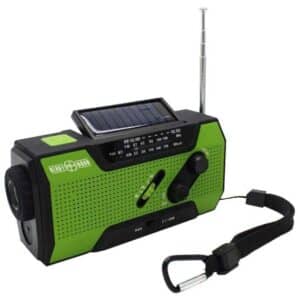
Because when someone first hears the term ‘Faraday Cage’, they have a wave of questions…
- What is a Faraday Cage?
- Why should I care?
- How do I get my hands on one?
- What should I put in it?
- Do they work?
The first question is because you overheard someone talking about one. And you want to know what’s the hype is all about…
The second is because you’re still confused why it matters. But once you understand why, the next question is:
“How do I get one?” and “What should I put in it?”
What Is A Faraday Cage?
It’s an electronic isolation chamber originally designed by Michael Faraday. Or more simply, it’s a special container to prevents electrical signals from passing through it. It allows an electrical charge to go around the container.
They work by enclosing a container in a layer of conductive material (usually a metal). This outer layer creates a “protective skin.” This skin redirects any external electrical fields around it.
Inside the enclosure, electronics are separated from the outer conductive skin. This is accomplished using a non conductive layers such as:
- Cardboard
- Plastic
- Glass or
- Wood
These cages can be any size, large or small.
Best Faraday Cage Uses
The best way to understand how something works is to share a few examples.
Engineering Design and Testing
In engineering, large versions of these faraday chambers are used. They block any outside interference when designing and testing sophisticated electronic devices.
Scientists can see how certain electrical devices react without other signals.
It’s used as a control for electrical testing purposes.
These devices also help determine if a device emits harmful radiation.
For example: The antenna in your cell phone was likely tested in such a way.
This was to ensure energy transmitted is safe for humans.
To ‘prove’ no energy was leaking at frequencies outside the safe spectrum. But these cages are not just for lab settings.
You’ve likely used (or passed through) several today.
Microwave Ovens
The mesh screen in the window of your microwave is a Faraday cage.
Microwaves use high-energy radiation to reheating your leftovers. And without it, this radiation would leak, cooking the rest of your kitchen.
Elevators
In elevators, cell phone “dead zones” are unintentional Faraday Cages.
The metal doors act as conductive skin, thus blocking signals. And it’s why you should stay in your car if a power line falls on it.
Because the vehicle’s metal body acts as a Faraday cage. It directs harmful electricity around the vehicle. Thus allowing the energy to pass harmlessly into the ground.
Isolating and protecting the passengers inside.
Spy Prevention
In 2013, the Vatican used one to shield the Sistine Chapel.
They wanted to prevent electronic eavesdropping during the selection of the new pope. So even if someone planted an electronic “bug” into the room, it couldn’t send a signal out.
As you see, these devices have many real-world applications.
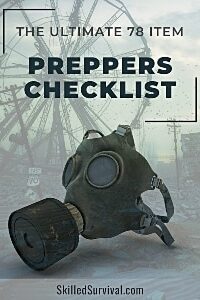
Want a free 78 item preppers checklist?
Enter your email below to instantly download this Complete Checklist PDF. No purchase necessary. 👇 👇4 Reasons Why You Need One
“I do not know with what weapons World War III will be fought, but World War IV will be fought with sticks and stones” – Albert Einstein
You should build one for many reasons.
A well-constructed Faraday cage will give your sensitive electronics a layer of safety. To protect them from damage or even to prevent signals from reaching others.
Here are four great reasons to build one:
1. Prepare For A Massive Solar Flare
A solar flare is an explosion on the surface of the Sun.
The occasional blasts produce a burst of electromagnetic radiation.
Scientists classify solar flares into three groups according to their X-ray strength.
The strongest are X-class flares.
These are significant events and can trigger radio blackouts around the world.
M-class flares are medium-sized.
These can cause brief radio frequency blackouts that affect Earth’s polar regions.
C-class flares are small with few noticeable consequences here on Earth.
It’s not a matter of IF the earth will experience another strong X-class flare; it’s a matter of WHEN.
↓ Solar Storms: More Dangerous Than You Think
They prepare you for the next massive X-class solar flare event.
2. Prepare For An Electromagnetic Pulse Attack (EMP)
The rise of nuclear powers around the world is growing. As well as the instability in global politics.
This leads to rising concerns over the possibility of a future attack.
All nuclear explosions create a massive EMP pulse. But, some designs can cause a more significant EMP effects than immediate destruction.
These designs are called “high-altitude electromagnetic pulse” (EMP) weapons.
They explode high in the stratosphere. And they use the Earth’s electromagnetic field to reflect and enhance the EMP effects.
Watch the following two videos for a more detailed explanation:
↓ The Facts about EMP and Faraday Cages
3. Prevent Cell Phone Tracking
I know it sounds like the plot of a spy movie… But nearly all modern phones are equipped with a GPS chip.
From the newest smartphone to the most basic flip phone.
This feature gives you the ability to use your phone for navigation. But it also allows mobile providers intel about your location (past and current).
Authorities share these location records during criminal investigations.
This information is supposed to be stored for a limited time only.
- But it’s unclear how long companies keep these location records.
- And it’s also unclear who can request access to these records.
But, if you block the cell signals to your phone, you also prevent the ability of the GPS to track your phone.
A Faraday bag like this Stealth Anti Signal Forensic Faraday Bag can keep your location and movement private.
↓ Review of a Cell Phone Faraday Bag
4. Prevent RFID Skimming
These days, “electronics” are no longer limited to “things with a battery, or a wall plug, or an on/off switch.”
More of the cards in your wallet contains RFID security chips.
These chips are designed to make mobile payments easier.
Unfortunately, the ease with which that information is shared is a double-edged sword.
You can have privacy or convivence…but NOT BOTH.
They also make it easier for criminals to scan the information. And they can do this remotely while it’s still in your wallet. But you can block this criminal activity with an RFID wallet (like this one from Access Denied).
If you’d rather not replace your entire wallet, you can use these RFID-blocking Safe Wallets.
↓ Review of RFID Blocking Leather Wallet by Access Denied
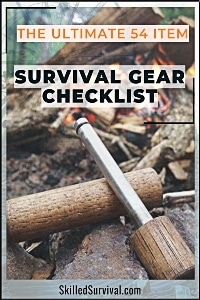
Want a free 54 item survival gear checklist?
Enter your email below to instantly download this Complete Checklist PDF. No purchase necessary. 👇 👇How To Build A Faraday Cage From Scratch
Now it’s time to build your own. I recommend watching each of the following videos. Each has some great ideas depending on how simple you want.
This first video is the cheapest I’ve ever seen – a cardboard box, towel, and aluminum foil:
↓ DIY Faraday Cage
The next video shows you a more elegant DIY Faraday Cage solution. However, it’s still easy and simple to build.
They use a Behrens10-Gallon Locking Lid Can as their conductive metal container. And cardboard as their insulator. Plus some aluminum tape for the seams.
↓ How To Make A Faraday Cage In 5 Minutes Using 3 Items
As you can see, building a homemade Faraday Cage is easy.
You don’t need a degree in Electrical Engineering to protect your devices. Just follow these examples. And stash spare electronic devices to protect your electronics from an EMP.
But which electronic devices? Glad you asked.

Want a free 78 item preppers checklist?
Enter your email below to instantly download this Complete Checklist PDF. No purchase necessary. 👇 👇What Should You Store In Your Cage?
I consider three categories: Home, Vehicle, and Carry.
Home
A Faraday box can be large or small, depending on how much you want to add.
In a small Faraday box, I recommend stashing the following:
Communication Devices
Communication devices are the most critical electronics you should put in.
Add at least one set (aka walkie-talkies) and one over-the-air radio.
- Will radio communications still occur after an EMP attack?
- Won’t the EMP blast take down those communication lines and towers?
Maybe yes; maybe no.
It’s hard to predict, and as you’ll learn below, no single blast can take down ALL electronics. So, the following devices are a good start for your home cage:
Hand crank – Solar Radio
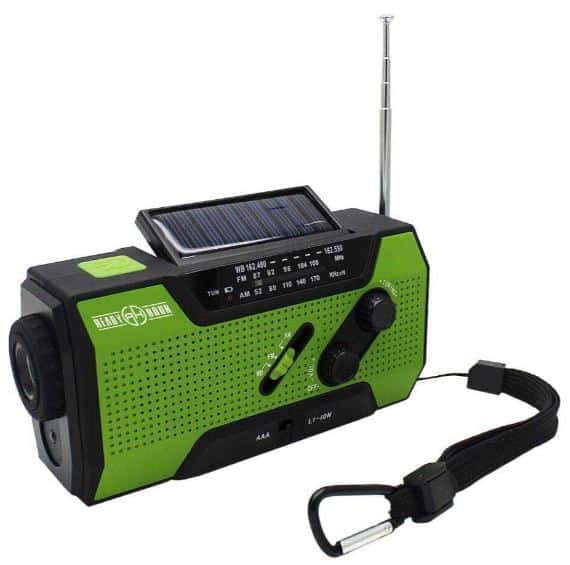

You can use this hand crank radio to power up a cell phone to make a 1-2 minute call in a dire emergency.
Ham Radio
Ham radio communications are a must so add a portable ham radio.
Consider this radio a spare since you want to keep it in for a surprise EMP event. And really, we’ll won’t get a warning of an actual EMP attack.
Walkie Talkies
I firmly believe in preparing with a coalition.
Whether that’s a survival group or your local family.
In emergencies, having other people you can trust is essential. But you’ll want a way to communicate with each other locally.
So each member should stash a spare set of walkie-talkies.
That way, if the blast does take out most communication devices, you’ll still have your 2-way radios.
The fragile masses won’t have anything.
Illumination Devices
If the grid is down, your main source of nighttime illumination will be candles (or flashlights).
Candles work for a few days.
But unless you stock up like crazy, you’ll eventually run out. Plus, good luck moving around at night with candles.
So you should add a few sources of light.
Tactical Flashlight
Add a tactical flashlight.
It doesn’t need to be expensive .
A small single double A battery LED flashlight is ideal.
The last thing you want to do is stash a $100 flashlight and never use it.
Headlamp
There are some tasks where a headlamp work better than a flashlight.
It’s ideal for tasks that require two hands.
For me, stashing a headlamp is the way to go.
Hunting-Related Electronics
Night goggles are a powerful tool in a survival situation. However, they require power.
So if you want the advantage of using night vision goggles after an EMP event, add a pair.
The same idea goes for high-powered rifle scopes.
I’m not certain these electronics will be taken out in an EMP.
But if your survival plan includes hunting, don’t risk it.
Spare Rechargeable Batteries / Battery Chargers / Solar Charger
You add batteries to support your battery-powered devices.
You also need the means to recharge batteries without using grid power.
So get some rechargeable batteries, a battery charger, and a portable solar panel.
Ideally, all your devices use the same size battery. The most common is the AA battery. So if you can match all your electronic devices to AA, you make your life easier.
If not, you’ll need spare batteries for each battery type.
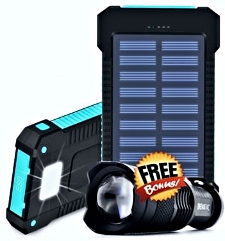
Then use your batteries to power your devices like your Hand Crank Radio, Tactical Flashlight, Headlamp, etc.
If you pair an Anytime Charge Power Bank with a few rechargable Batteries, you can bypass the need for a battery charger.
A Spare Survival Watch or Tactical Watch
Most people I know have more than one survival watch. Why? Primarily because they are awesome.
So don’t be afraid to toss one of your spare tactical watches in.
Vehicle
You can stash an entire vehicle if your cage is large enough (i.e., a shipping container).
Otherwise adding one inside your vehicle can be smart.
This works best if you always have your vehicle with you at work and home.
However, if you live in extremely cold climates, you may have to consider electronics in those conditions. But generally, a glove box or under-seat enclosure will provide enough space for a shielded spare radio and cell phone.
This would be a must if your vehicle were disabled by a massive EMP or solar flare (due to so many electronic parts).
At a minimum, you’ll want to stash a spare communication system if stranded.
Carry
These can be small enough for bug-out bag gear, a get-home bag essential, or even your jacket pocket. Plus, it’s light enough to become part of your everyday carry.
Police departments use them to protect electronic devices collected as evidence.
The RFID-shielding wallets or RFID-blocking credit card sleeve are at the smallest end of the spectrum.
These can help protect your information from mobile scanners.

Want a free 78 item preppers checklist?
Enter your email below to instantly download this Complete Checklist PDF. No purchase necessary. 👇 👇Myths & Misinformation
1. They Are Too Complicated To Build Yourself
People can get discouraged when they see professional installations. Ones that seem impossible to reproduce at home.
These cages often use expensive materials and highly intricate doors and openings.
They help to reduce the chance of any signal transmission. At the very simplest, you can use any metal enclosure that can work with some modifications.
Ammo cans, metal cabinets, steel lockers, and trash cans all work.
Even just several layers of heavy-duty aluminum foil can do the trick.
Wrapping it carefully around a cardboard box, it can protect small devices.
2. Chicken Wire Works As Well As Foil Or Metal Boxes
Some discussions online show that using chicken wire works just as well as other options. This is not a good idea.
Chicken wire provides much less EMP protection than even aluminum foil by a wide margin.
See for yourself:
↓ Faraday Cage – Check Wire vs. Aluminum Foil
3. You Can Use An Ammo Can (without modifications)
Ammo cans don’t work without modifications.
First off, ammo cans typically have a gasket around the lid to create a tight fitting seal. But this gasket is not a conductive material, creating a EMP breach.
This allows an EMP blast to penetrate the ammo can.
You also have to deal with the hinges on the backside, which are also not an ideal conductive seal.
If you want to use an ammo can, you’ll either need to modify it, or wrap it with several layers of foil. Or put the ammo can into another Faraday Cage.
↓ Ammo Can EMP Cage
4. How They Actually Work
There are several misconceptions about how this tech works.
These misconceptions create several myths, such as:
- Believing They Can Use A Cell Phone To “Test” – doesn’t work that way
- That They Must Be Grounded – they do not
- That A Single EMP Will Take Out All Electrical Devices – it won’t because different nuclear/solar EMP blasts have different frequencies (however, if an attacker used several blasts designed for different frequencies, it could do a large range of damage, or if an attacker focused solely on the grid – that would be devastating as well)
- That All Modern Vehicles Will Become Paperweights After An Attack – they won’t
Watch the following video for more details on these misconceptions, and pick up this fantastic educational book on EMPs.
↓ EMP Misconceptions
Final Thoughts
Now that you’re up to speed, what will you do about it? Are you going to take action? When?
I think you should take action right now. Why? Because “I should have” and “I could have” are just poor excuses when it’s too late.
Building a Faraday Cage is simple, easy, and affordable. So no excuses; get it done.

Prepare, Adapt & Overcome,
P.s. - I just found out 2 out of 3 Americans don’t feel prepared for a 3 day disaster!!!
I guess this goes to show how modern society continues to embrace ‘living a fragile life.’ What’s crazy is… it’s so easy to fix.
To make sure YOU have the basics, watch our FREE training on “10 Simple Steps To Basic Preparedness” that shows you HOW.
Nothing crazy here… this isn’t doomsday prepping... just the basics every responsible adult should have before a disaster strikes.Why You Can Trust Skilled Survival...
Go here now to review a full breakdown of:
- Who We Are
- Our Credentials
- Our Mission
- & Product Recommendations...
Here are a few highlights of our teams credentials & certifications:
- Certified Member of a Mountain Search & Rescue Organization
- Plant Emergency & Safety Leader for a Major Food Manufacturer
- Member of the 10TH Mountain Division Hut Association
- Certifications: Avalanche 1, WFR, CPR
- Official Gear Tester for Numerous Outdoor Gear Companies
- Countless Multiday Backpacking trips into Remote Wilderness
- Bachelor's Degree In Mechanical Engineering
- Bachelor's Degree In Civil Engineering
- Bachelor's Degree In Biomedical Engineering
"It takes 20 years to build a reputation and five minutes to ruin it." - Warren Buffett
We're fully aware that trust is NOT something you GET but is EARNED.
And we'll continue to earn YOUR trust through our forthright and honest approach with each new Blog Post, Guide & Product we create...
P.s - I just took this FREE 60-second 'Readiness Score Quiz'👇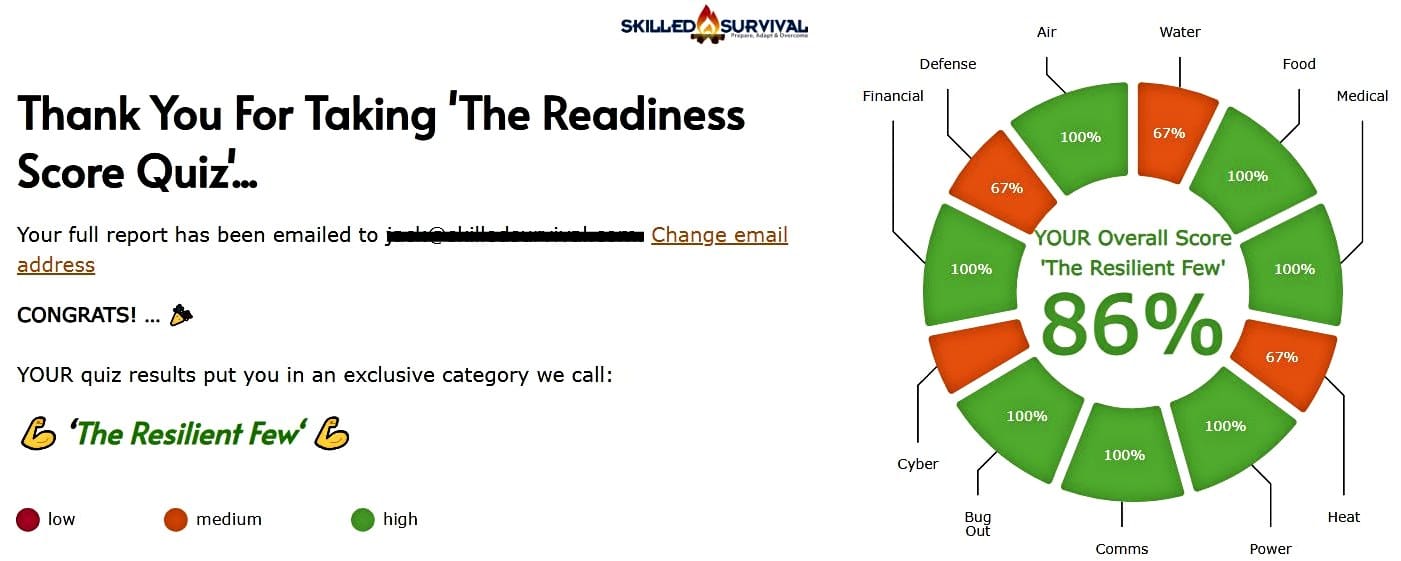
AND... I've still got a few gaps in my preps...🤔 But at least, I'm not part of 'The Fragile Masses'. 👍 Find out where YOU stand by answering a few questions...

Recommended Reading
LifeStraw Review: An Expert Puts It To The Ultimate Test
LifeStraw Review - with no moving parts, chemical additions, or batteries, it provides a lightweight, compact filter to treat up to 4000L...
Best Survival Bow: 16 Surprising Reasons YOU Should Get One
A survival bow is one of the most underappreciated weapons I think EVERYONE should own. Here are 16 reasons why YOU should get one today.
Best Survival Hatchets: Tough Enough To Outlast The Wild
Not all hatchets are created equal. A quality survival hatchet can do tasks even a survival knife cannot. Here's the one I carry in my pack.
Best Survival Radios: Why You Must Secure One (before SHTF)
Be the ONE who knows what the hell is going on after SHTF. Here's how to set yourself up with a reliable survival radio in a future disaster.
Best EDC Flashlight: Simple, Small, Compact & Super Bright
The best edc flashlight is durable, bright, compact and worth carrying! In this guide, we review the best one to make your search easy.
11 Proven DIY Survival Gear Projects ANYONE Can Follow
Building DIY survival gear doesn't NEED to be complicated to be effective. Here are the 11 best projects you can finish in just a few hours.


